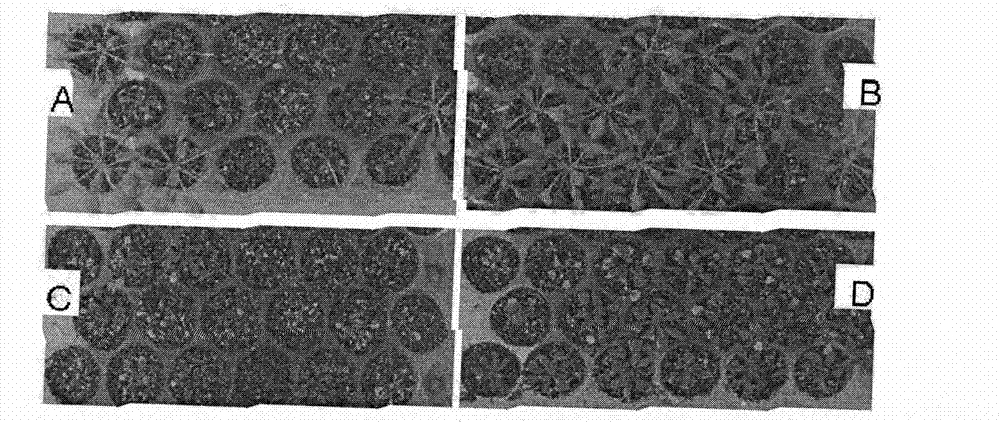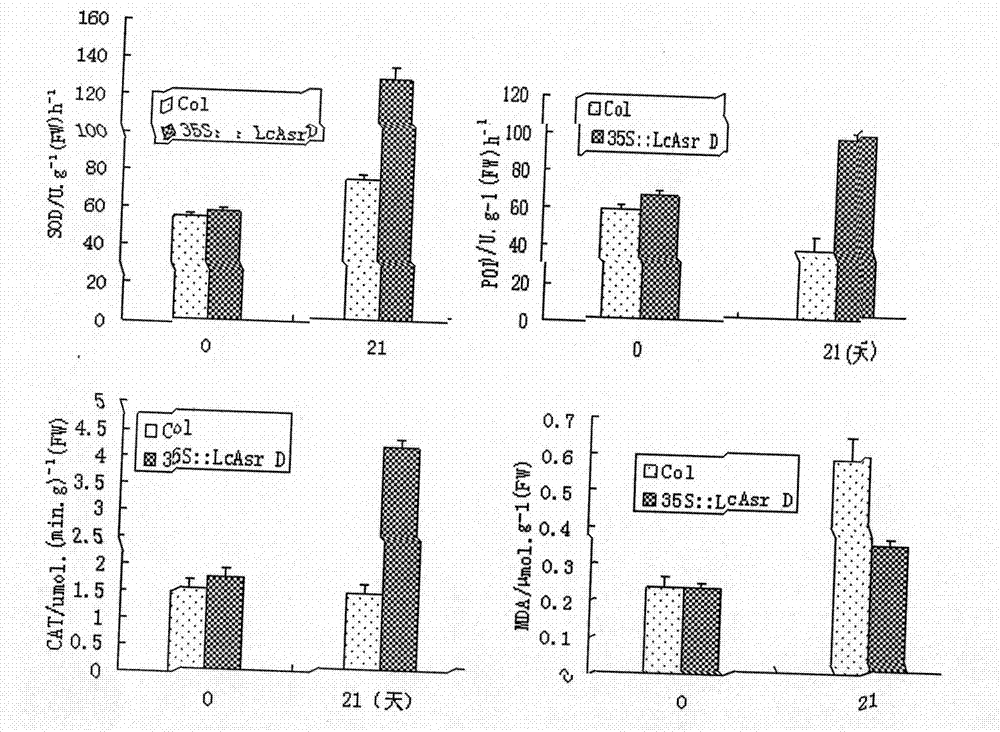Gene for increasing plant drought resistance and salt resistance and enconding product and application thereof
A genetic and salt-tolerant technology, applied in the direction of plant genetic improvement, plant products, angiosperms/flowering plants, etc., can solve the problems of litchi preservation, storage and transportation difficulties, peeling browning, and affecting the development of litchi industry.
- Summary
- Abstract
- Description
- Claims
- Application Information
AI Technical Summary
Problems solved by technology
Method used
Image
Examples
Embodiment Construction
[0032] The present invention is described in detail below in conjunction with embodiment:
[0033] 1. Source of material: Litchi fruits are collected from
[0034] 2. Method:
[0035] (1) Litchi peel cDNA library construction: Fresh litchi fruit peeled immediately after harvest and stored in liquid nitrogen at -70°C, the total RNA of the peel was extracted by CTAB method, and the SMART of Clontech Company was used TM cDNA Library ConstructionKit, reverse transcribe cDNA according to the instructions, and construct a cDNA library.
[0036] (2) Microarray fabrication and differentially expressed gene screening: about 10,000 independent clones were randomly selected from the cDNA library, plasmid DNA was extracted and quantified, and the plasmid DNA was spotted on the chip using an automatic spotting machine. The cDNA was reverse-transcribed from the total RNA of litchi pericarp at 0h and 48h postharvest, respectively, and the total RNA of litchi pericarp at 0h and 48h after h...
PUM
 Login to View More
Login to View More Abstract
Description
Claims
Application Information
 Login to View More
Login to View More - R&D
- Intellectual Property
- Life Sciences
- Materials
- Tech Scout
- Unparalleled Data Quality
- Higher Quality Content
- 60% Fewer Hallucinations
Browse by: Latest US Patents, China's latest patents, Technical Efficacy Thesaurus, Application Domain, Technology Topic, Popular Technical Reports.
© 2025 PatSnap. All rights reserved.Legal|Privacy policy|Modern Slavery Act Transparency Statement|Sitemap|About US| Contact US: help@patsnap.com


